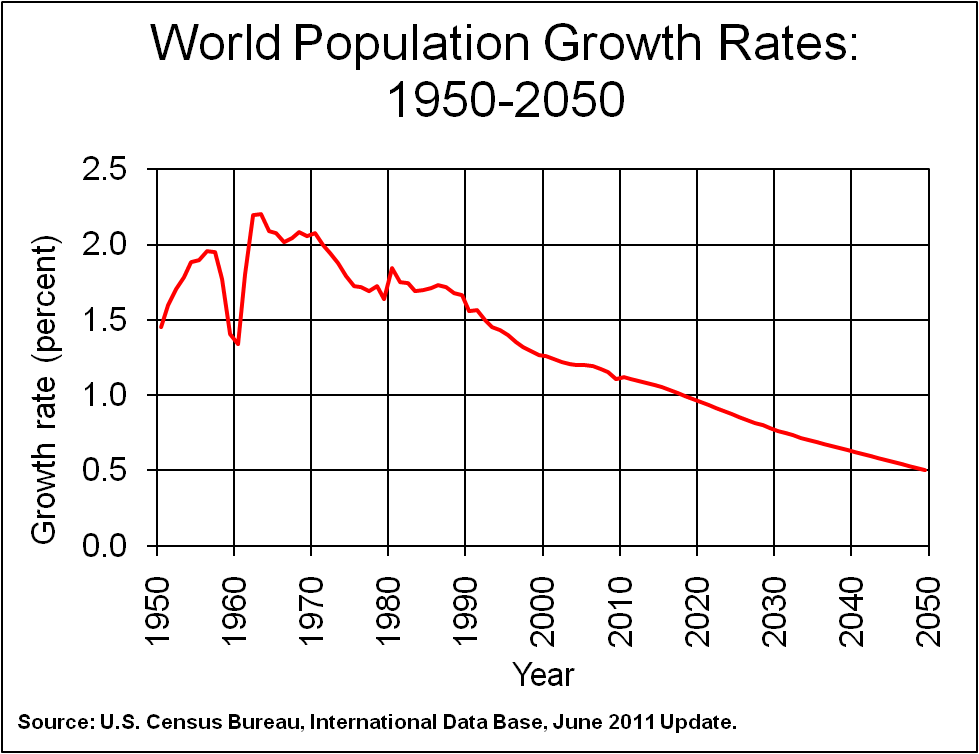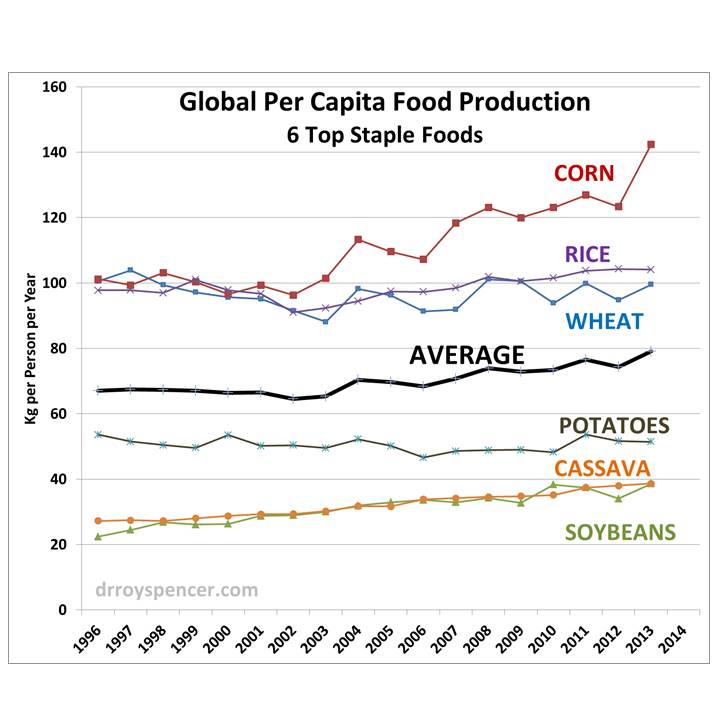There’s an article in yesterday’s Independent entitled, Have we reached ‘peak food’? Shortages loom as global production rates slow.
From reading the article, which is based upon a new report from two American universities and a German environmental institute, you would think that global food production is going down, while global population continues to rise.
WRONG. The rate of raise in production has apparently slowed for some commodities.
Now, imagine if peak oil was defined in this way? (It’s not). Or “peak global temperature”?
As far as I can tell, this is one more example of environmental fear-mongering.
First of all, food production is not limited by available land…it depends upon demand. If demand rises, so does food production. Hunger, malnourishment, and starvation are not due to a lack of food. They are almost always due to governmental policies which hinder farming or hinder the prosperity needed to import food.
What really matters is per capita food production. Not whether the rate of growth in just food production is slowing, because the rate in growth of the global population is also slowing:
The real question is: As global population rises, is our food production keeping pace?
Not only is it keeping pace, it is speeding up.
You really don’t need to keep track of certain meats as the study did (such as chickens, eggs), just the staple grains which start the food supply. For example, the doubling of global soybean production in the last 20 years is primarily due to increased consumption of pork in an increasingly prosperous China, which requires soybeans for feed.
Here’s a plot I put together from U.N. statistics regarding the top staple foods the world consumes. As you can see, not only has global food production increased in recent years (as has global population), the ratio of the two shows the average person in the world has more food available to eat, not less:
So, how do studies like this ever get published? Lies, damn lies, and statistics.
But…but…isn’t global warming reducing crop production?
So far, there is no sign of that. As I’ve shown before, climate model predictions have essentially failed. Warming and precipitation changes in America’s heartland have failed to materialize…despite predictions to the contrary. The Earth as a whole has instead responded to increasing CO2 in the atmosphere with “global greening”.
But, without the threat of climate change and reduced food supply, universities and environmental institutes wouldn’t be able to get the money they need to survive, would they?

 Home/Blog
Home/Blog





